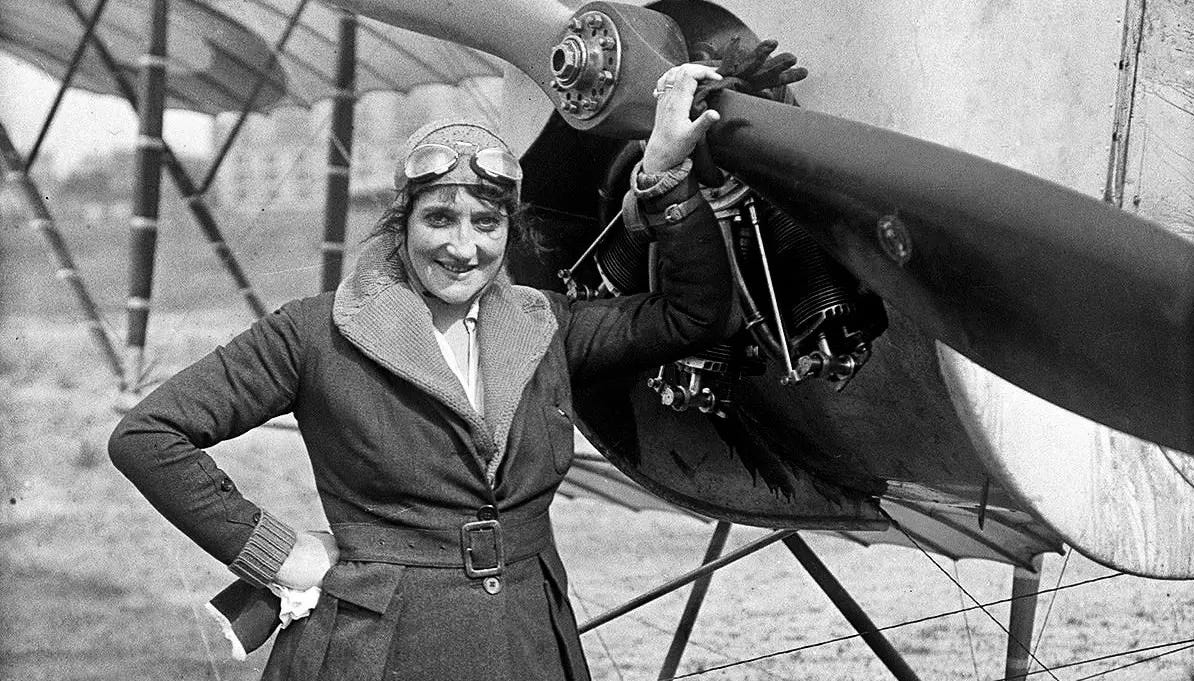The Flying Great Grandpa
An afternoon of Star Trek reruns opens the doors of communication between generations and new connections are formed between a young woman and her great grandfather.
I was sprawled on the living room floor, deeply involved in an original Star Trek episode, when I noticed Great Grandpa was enthralled with it, too.
I couldn’t imagine he’d be interested in an old rerun of Star Trek. But there he sat, just as absorbed in Captain Kirk’s storyline as I. After a while, I turned around to see if his interest had faded and found him staring at me instead of the screen.
“Is anything wrong,” I asked. “I can change the channel if you’re bored.”
“No. I'm just looking at you and thinking that you see those spaceships as the wave of the future,” Great Grandpa said. “At your age, single-engine planes were our wave of the future to me. Flying fascinated me, and now you’re just as involved in stories about flying, but now it’s space travel. Funny how the perspectives are the same, yet so different.”
“Did you ever fly a plane,” I asked.
“Oh goodness, yes,” he said. “The 1920s were the barnstorming days of aviation and that was my passion. Barnstormers were exhibition aviators who flew monoplanes and biplanes. I did some of that — traveling to county fairs and carnivals performing flying stunts and parachute jumping.”
I was dumbfounded. I never knew Great Grandpa had been a pilot. Suddenly Star Trek wasn’t so interesting.
“Tell me about it,” I said.
“In those days flying puddle jumpers felt like our brand of Star Trek. Pilots dared to take on new challenges. Walter Hinton made the first flight across the Atlantic Ocean in a seaplane in May 16, 1919. Sir John Alcock and Sir Arthur Whitten-Brown made the first nonstop airplane flight across the Atlantic on June 14, 1919,” he said.
“They took off from Newfoundland and landed in Clifden, Ireland,” he continued. “It took just over 16 hours, and they did it in heavy fog, flying blind and under great difficulties. But they won $50,000 dollars from the London Daily Mail newspaper, the queen knighted them, and people worldwide recognized them for their skill. That flight was made in a biplane powered by two Rolls-Royce 350 horsepower motors.
“Amazing, isn’t it? Now you talk about warp speed, but when I flew in 1939 the best speed was about 475 miles per hour!” Grandpa laughed.
"Tell me more," I said.
“Women got into flying too. The first woman pilot was French — Baroness Raymonde de LaRoche,” he said.

“She officially registered and received a Pilot Certificate in 1910, flew her own plane and got her license when she was 23 years old. Unfortunately, she died in an accident in 1919. But others followed her. Marie Marvington became a record-holder in 1910, Helen Dutrieu and Jeanne Herveux in 1911, and Miss Pallier took up passengers in 1913. Harriet Quimby became the first American aviatrix in 1911.”
I had never paid much attention to Great Grandpa before. But suddenly, his life got exciting, and I wanted to hear more about his adventures. I thought of all the questions I wanted to ask him about the old days and what his world was like back then. I looked up and waited for him to continue.
“Well, I fell in love with airplanes and worked my way through one of the only aeronautical engineering courses in the country at that time—University of Michigan,” he said. “Most exciting days of my life. We worked our way through school flying cargo and barnstorming.
“With the beginning of World War II, the demand for people like me who could help manufacture fighting planes increased, so I went to work for Lockheed. By that time your Grandmom was born, and I stopped flying. But I worked in aviation all my life and loved every minute of it. I drove and flew all over the country, helped design aircraft for military and commercial use and I got a chance to teach young people about flying,” he said.
“Tell you what,” Great Grandpa said, looking me straight in the eye. “I’ll make a deal with you. I’ll teach you about the old days and you teach me about space travel. I’d love to know more about it. How about it? Do we have a deal?”
”You bet we do!”





Cherish the memories and remember the stories of growing up. Looking at old family photo albums awaken times forgotten.
A parable about communicating and seeing, really seeing another soul. Lovely.